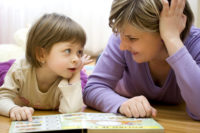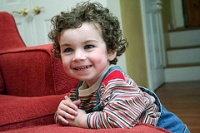Q: What can we do to make the back of the tongue elevate for /k/ and /g/? We can use the Tongue Retraction Response (TRR) as follows: Tactile stimulation down the midline of the tongue from anterior to posterior causes the entire tongue to retract back and up toward the velum. The response occurs about half-way down the tongue, and is elicited after the Tongue Bowl Response (TBR) and before the Tongue Gag Response (TGR). I also have called the…
Tongue Back Elevation
By Pam Marshalla


